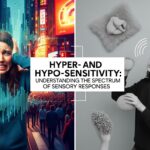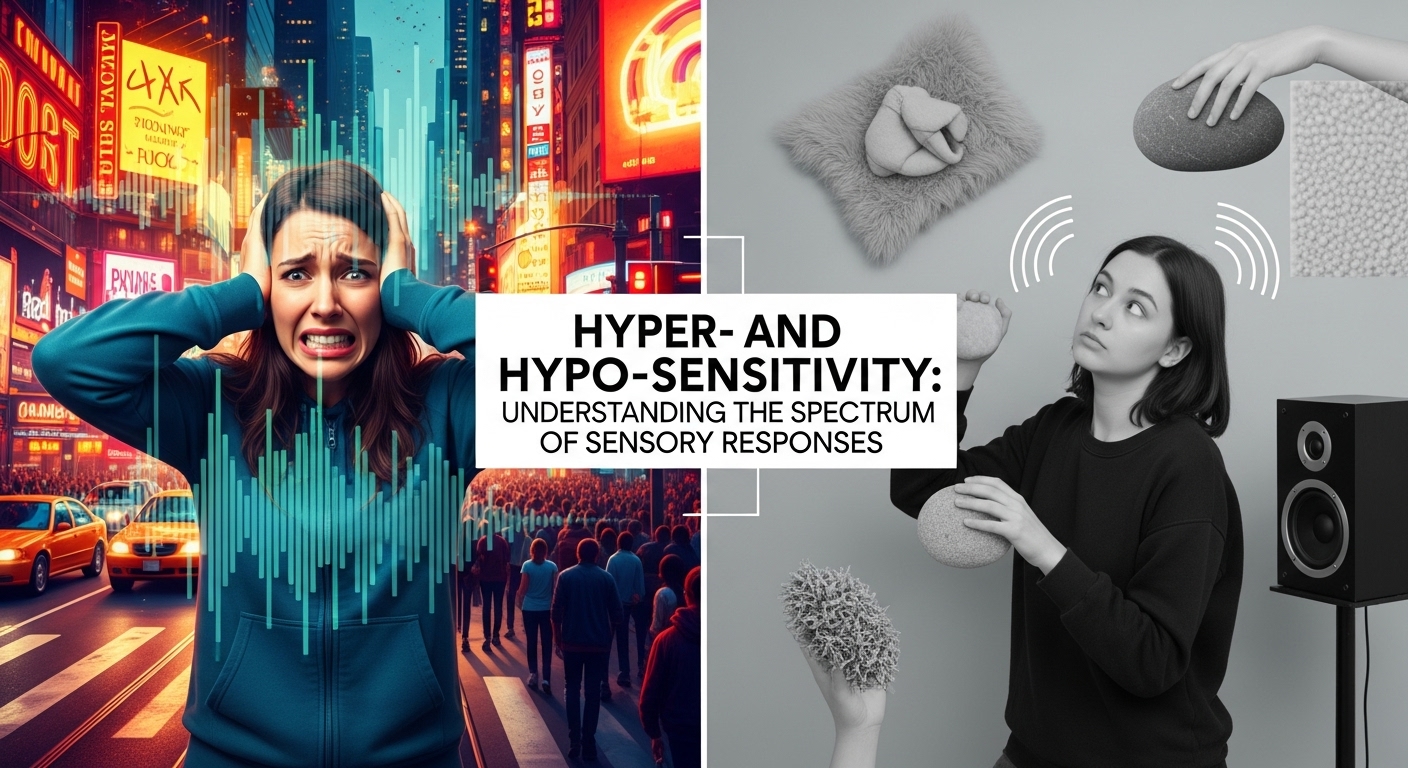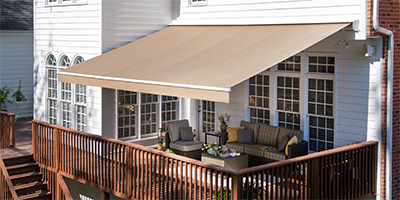Every child experiences the world through their senses, touch, sound, sight, smell, and taste. For most children, these sensations help them navigate and understand their surroundings. But for many children with Autism Spectrum Disorder (ASD) or other developmental conditions, sensory experiences can be far more intense or muted than usual.
Some children react strongly to the hum of a light, the texture of clothing, or the smell of food, while others might seem indifferent to loud noises, bright lights, or even pain. These differences are known as hyper-sensitivity and hypo-sensitivity, and together, they represent the broad spectrum of sensory responses that affect how children perceive and interact with their environment.
Understanding these sensory variations is key for parents, educators, and caregivers. When families have the knowledge and tools to support their children’s sensory needs, they can create environments that promote comfort, learning, and emotional well-being. Professional guidance from specialists like the expert team at Kids Club ABA can make this process smoother and more effective through personalized behavior and sensory support programs.
What Are Hyper- and Hypo-Sensitivity?
Hyper-sensitivity (also called sensory over-responsivity) refers to an intense or exaggerated reaction to sensory input. For example, a child may cover their ears at the sound of a vacuum cleaner, avoid certain fabrics, or become distressed in brightly lit environments. Everyday sensations that seem normal to others can feel overwhelming, painful, or alarming.
On the other hand, hypo-sensitivity (or sensory under-responsivity) means the child has a reduced reaction to sensory input. They might not notice loud noises, appear indifferent to temperature changes, or seek out strong sensory experiences like spinning or deep pressure.
Both conditions can affect any of the senses including visual, auditory, tactile, olfactory, gustatory, and proprioceptive (body awareness) systems. Many children exhibit a combination of both, being hyper-sensitive in some areas and hypo-sensitive in others.
For instance, a child might be overly sensitive to loud sounds but under-sensitive to touch, craving hugs or rough play. This complexity highlights why individualized approaches, such as those provided by Kids Club ABA, are essential for effective sensory support and behavioral growth.
The Science Behind Sensory Processing
Sensory processing occurs in the brain, where sensory signals from the environment are received, filtered, and interpreted. In children with autism or sensory processing challenges, this process may be disrupted. The brain might amplify some signals while ignoring others, creating a distorted or confusing sensory experience.
Imagine trying to hold a conversation while multiple radios play at different volumes in the background, some too loud, some too quiet, some completely offbeat. That’s what sensory overload or underload can feel like for children dealing with hyper- or hypo-sensitivity.
These neurological differences are not due to behavior or attitude; they are biological. Recognizing this helps parents respond with compassion instead of frustration. Therapy and structured interventions, especially Applied Behavior Analysis (ABA), can help children learn coping strategies, reduce distress, and improve daily functioning.
Common Signs of Hyper-Sensitivity
Children with hyper-sensitivity may appear defensive or avoidant toward certain sensory experiences. They may respond with discomfort, fear, or even physical reactions. Common signs include:
- Auditory sensitivity: Covering ears or crying at loud or unexpected noises (sirens, school bells, blenders).
- Visual sensitivity: Avoiding bright lights, fluorescent bulbs, or fast-moving visuals.
- Tactile sensitivity: Disliking certain clothing textures, tags, or grooming activities (haircuts, brushing).
- Oral sensitivity: Refusing certain foods due to taste, texture, or temperature.
- Olfactory sensitivity: Gagging or reacting strongly to smells like perfumes or cleaning products.
Hyper-sensitive children often need calm, predictable environments and gradual exposure to new sensory experiences. ABA therapists, such as those at Kids Club ABA, work closely with families to develop customized strategies that help children tolerate and adapt to overwhelming stimuli in a safe and supportive way.
Common Signs of Hypo-Sensitivity
Children who are hypo-sensitive may seem less responsive to their surroundings. They might crave strong sensory input to “feel” stimulation and stay engaged. Signs may include:
- Not responding to their name or loud noises.
- Enjoying spinning, jumping, or crashing into objects.
- Frequently touching surfaces, people, or objects.
- Seeking deep pressure (tight hugs, wrapping in blankets).
- Chewing on non-food items like clothing or pencils.
- Having a high pain tolerance or not reacting to injuries.
These children often need structured sensory input to stay regulated and attentive. ABA professionals and occupational therapists can collaborate to provide safe, sensory-rich activities that fulfill these needs and improve focus, behavior, and self-control.
How Sensory Sensitivities Affect Behavior
Sensory sensitivities can significantly influence behavior, often being misinterpreted as defiance or poor discipline. When a child refuses to wear shoes or melts down in a noisy cafeteria, it’s rarely an act of disobedience, it’s a response to sensory distress.
For example:
- A child overwhelmed by noise may try to escape a room or cover their ears.
- A child who doesn’t feel enough sensory input might seek out movement or physical contact, appearing hyperactive.
- Overstimulation can lead to anxiety, meltdowns, or withdrawal, while understimulation can result in inattentiveness or lack of motivation.
Recognizing the sensory root of these behaviors allows parents and teachers to respond appropriately by modifying the environment rather than punishing the behavior. Programs at Kids Club ABA focus on identifying these underlying sensory triggers and replacing maladaptive responses with healthier, more adaptive behaviors.
The Role of ABA Therapy in Managing Sensory Sensitivities
Applied Behavior Analysis (ABA) therapy has long been considered the gold standard for supporting children with autism. When sensory challenges are part of the picture, ABA can be integrated with sensory-based interventions to help children regulate and respond appropriately to sensory input.
At Kids Club ABA, therapists use evidence-based techniques tailored to each child’s unique sensory profile. Their approach includes:
1. Assessment and Individualized Planning
Therapists begin with a comprehensive sensory and behavioral assessment. This helps identify specific triggers, sensory preferences, and behavioral patterns associated with hyper- or hypo-sensitivity.
2. Desensitization and Exposure Techniques
Children are gradually and safely exposed to sensory stimuli that cause discomfort. For example, if a child fears loud sounds, the therapist may introduce low-volume versions paired with positive reinforcement until tolerance increases.
3. Positive Reinforcement
ABA relies heavily on positive reinforcement rewarding desired behaviors to encourage repetition. When children remain calm during sensory exposure or use coping tools, they receive praise or preferred rewards.
4. Teaching Coping and Communication Skills
Therapists teach children ways to express discomfort before it escalates such as requesting breaks, using headphones, or signaling “too loud.” Visual aids, communication boards, or sign language can be integrated depending on the child’s abilities.
5. Parent Training and Collaboration
One of the hallmarks of Kids Club ABA is involving parents in every step of therapy. Families receive training on how to recognize sensory overload, adjust environments, and reinforce progress at home. This continuity between therapy sessions and home life accelerates success.
Practical Tips for Parents
Supporting a child with sensory sensitivities at home doesn’t require a complete lifestyle overhaul. Small, thoughtful changes can make a huge difference in comfort and daily functioning.
1. Create a Sensory-Safe Space
Designate a quiet, calm area where your child can retreat during sensory overload. Use dim lighting, soft textures, and soothing sounds to create a relaxing atmosphere.
2. Use Visual Schedules
Predictability reduces anxiety. Visual schedules help children understand what comes next and minimize sensory surprises.
3. Provide Calming Tools
Weighted blankets, fidget toys, or sensory chewables can help children self-regulate and reduce stress.
4. Plan Ahead for Outings
Before visiting new or noisy places, talk your child through what to expect. Bring familiar sensory aids like headphones or sunglasses to help them feel secure.
5. Gradually Introduce New Experiences
Whether it’s a new food or sound, introduce change slowly. Pair the experience with positive reinforcement to build tolerance and comfort over time.
6. Collaborate with Professionals
ABA and occupational therapy teams can provide sensory integration exercises and data-driven strategies to address both over- and under-responsivity.
Building Confidence Through Understanding
Children with hyper- and hypo-sensitivity experience the world differently but not wrongly. Their reactions are rooted in genuine neurological differences that deserve empathy and support. With patience, structure, and professional guidance, children can learn to manage sensory input, build coping skills, and participate more fully in daily life.
Organizations like Kids Club ABA play a critical role in this journey. By combining evidence-based ABA therapy with sensory awareness and family collaboration, they empower children to achieve comfort, confidence, and lasting independence.
Conclusion
Hyper- and hypo-sensitivity illustrate the diverse ways the human brain processes sensory information. For children on the autism spectrum, these sensitivities can shape how they perceive, react to, and interact with the world around them. Understanding these differences isn’t just about managing challenges, it’s about recognizing strengths and creating environments where every child can thrive.
With consistent support from specialists such as Kids Club ABA, families can learn to navigate the sensory spectrum with compassion, strategy, and confidence, helping children feel safe, capable, and connected to the world on their own terms.











